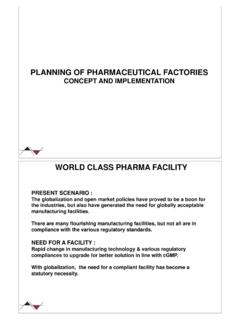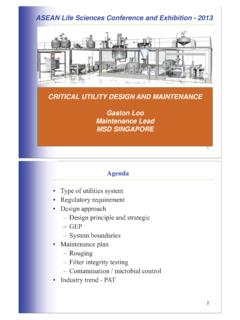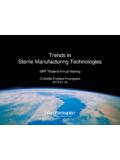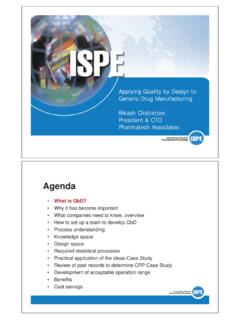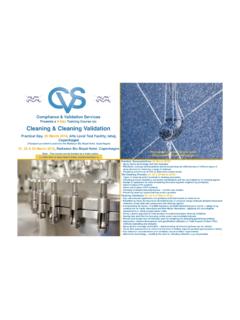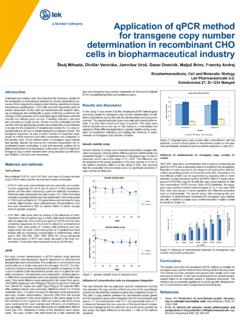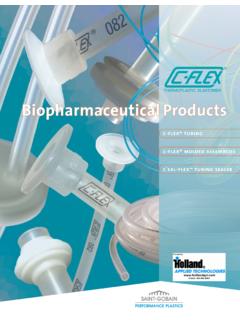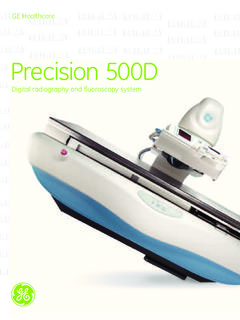Transcription of GMP Design of Pharmaceutical Facilities - ISPE Th
1 GMP Design of Pharmaceutical Facilities Process Design Layouts and Flow Diagrams OSD Facilities Biopharma and Aseptic Facilities Speaker - Leonid Shnayder, , Industry Professor in Pharma Manufacturing and Engineering (PME) Program at Stevens Institute of Technology Work experience: Pharmaceutical Process Development and Optimization Design of Pharma Plants (Process Engineer) Designed plants for Merck, Pfizer, Sanofi-Pasteur, Amgen etc. Teaching in the PME program at Stevens 2 Speaker - Leonid Shnayder, , Courses taught: Intro to Pharma Manufacturing Validation in Pharma Manufacturing GMP in Pharma Facilities Design Manufacturing of Biopharmaceutical Products Manufacturing and Packaging of Oral Solid Dosage Products Statistical Methods in Pharma Manufacturing 3 PME Program at Stevens Institute of Technology Master of Science in Pharma Manufacturing degree 10 courses (5 foundation plus 5 elective courses) All PME courses are offered in both on-campus and online delivery modes.
2 It is possible to earn the degree entirely online Applicants must have Bachelor s degree in science, pharmacy or engineering Graduate Certificates Pharmaceutical Manufacturing Validation, Compliance and Quality 4 courses each 4 Current Good Manufacturing Practices (cGMP) cGMP is a set of regulations published by the US Food and Drug Administration (FDA) Most national and international agencies regulating pharma industry have similar regulations or guidelines cGMP regulations cover many aspects: organization and personnel, building and Facilities , equipment, control of components, production controls, packaging and labeling controls, laboratory controls etc.
3 We ll discuss aspects related to building and Facilities and equipment 5 GMP Requirements Highlights Building shall be of suitable size, location and construction, easily cleanable and maintainable Building shall be designed to prevent equipment and material mix-ups and contamination Separate areas shall be provided for different operations Provide adequate control of air pressure, microorganisms, dust, humidity and temperature as appropriate Written procedures required for cleaning and sanitation 6 Process Design considerations Basic unit operations Process configuration Equipment requirements Process utility requirements Waste treatment Process control Facility requirements Facility layout and process flows Cleaning of equipment and piping 7 Process Design Tools Process description Block Flow Diagrams (BFD) Process Flow Diagrams (PFDs) Piping and Instrumentation Diagrams (P&IDs)
4 Material and energy balances Process and utility equipment list Utility requirements table Instrument list Equipment specifications and/or Data Sheets Piping specs 8 Block Flow Diagram Tablet Manufacturing Mill/Sift Coat Mill Coating Solution Prep Weigh Raw Material Raw Material Raw Material Lubricant Raw Material Raw Material 5 Excipient 4 Raw Material 3 Raw Material 2 1 Active Ingredient 10 9 6 7 8 Gran Solution Prep Granulation Dry 10 9 8 7 6 1 2 3 4 5 9 2 3 4 Blend Blend 8 7 6 5 Compress Purified Water/Solvent 11 Purified Water/Solvent 11 10 9 Block Flow Diagram and its Uses BFD identifies major process operations and their relationships to each other BFD can be useful for.
5 Determining the needs for process rooms/areas Visualizing relationships between different rooms Creating a conceptual building layout or bubble diagram Identifying major process equipment needed BFD is used at very early project stages BFD can be considered as a precursor to a PFD Process Flow Diagram 10 Process Flow Diagrams (PFD s) PFD s are graphical representations of the manufacturing process based on manufacturing instructions PFD s are reference tools that support manufacturing and assist engineers and constructors with developing Facilities and equipment Design requirements. There are no universal standards for PFD s.
6 Each company uses its own methodology and symbology. All PFD s contain at a minimum the following basic information Material balance and material streams based on formulation and batch size Graphical representation of the major steps in the manufacturing process Identification of the equipment used in the manufacturing process 11 Process Flow Diagram 12 Process Flow Diagrams PFDs may be used to describe only the main manufacturing steps or (better) include the support operations, such as liquid as solid waste treatment, exhaust gas treatment, generation and distribution of purified water and other utilities PFD is a document generated early in a project usually during conceptual Design stage.
7 And may be updated to reflect changes incorporated at later stages PFDs may be used for developing preliminary equipment list and sizing of the major equipment PFDs help architects to allocate appropriate spaces for all process operations and develop logical plant layout PFDs are also used as a basis for more detailed process drawings called P&IDs Piping and Instrumentation Diagrams 13 Personnel Flow & Gowning Diagram 14 Material Flow Diagram 15 Portable Equipment Flow Diagram 16 Process and Facility Design - Summary Facility Design and layout must satisfy: Process requirements Personnel flows Material flows (raw materials and products) Equipment layout requirements Operational access requirements Maintenance access requirements Facility should be designed around process needs!
8 17 Building Materials Clean Room Features Walls and floors designed for easy cleaning, resistant to wear and cleaning chemicals Coved floor and wall corners Minimize horizontal piping, ducts, equipment surfaces where dust can accumulate Lighting is supplied by sealed fixtures, often incorporated into ceiling HEPA filter modules. 19 Clean Room Features (cont d) Typical clean room finishes include: Epoxy terrazzo floors Epoxy painted walls Suspended drywall or plaster ceiling, painted for easy cleaning Clean rooms can be built at the site or purchased as modules from a vendor 20 Examples of Modular Clean Rooms Clean room may be purchased as a vendor supplied and installed module 21 Building Materials and Finishes - Summary Materials and Finishes are selected for suitability within every select environment in the facility.
9 A very informed basis of understanding is required to properly select materials and finishes. Knowledge of the manufacturing process(s), SOP s, staff activities and maintenance needs for all areas within the facility are vital to a successful solution. 22 Manufacturing of Solid Dosage Products Guiding Principles for Facility Design Guiding Principles for Regulatory Compliance Facility Criteria Facilitate operations Provide adequate space Provide the proper flow of materials Provide control of materials Prevent contamination of materials and products Processes Perform as required by the applications approved by the regulatory agency Are demonstrably under control Will not contaminate Have procedures for proper operation and record keeping 24 Guiding Principles for Regulatory Compliance Environmental Provide suitable conditions of temperature.
10 Humidity, and particulate control Prevent cross contamination Prevent microbial growth or infestation Facilities and Equipment Surfaces that will not contaminate Provide ease of cleaning and maintenance 25 Contamination and Level of Protection Criteria Potential Contamination Sources HVAC Systems Process equipment cleanliness Room construction issues Containerization and transport of materials Personnel Infiltration from other areas 26 Unit Operations in Solid Dosage Manufacturing Unit Operations and Equipment Applications Dispensing and Weighing Sifting and Classifying Milling Granulation Drying
